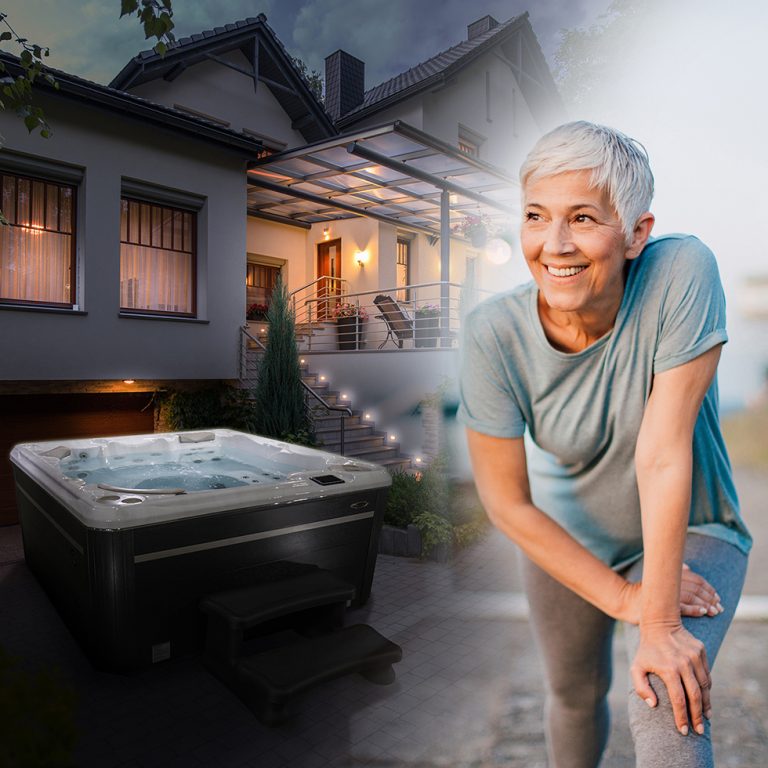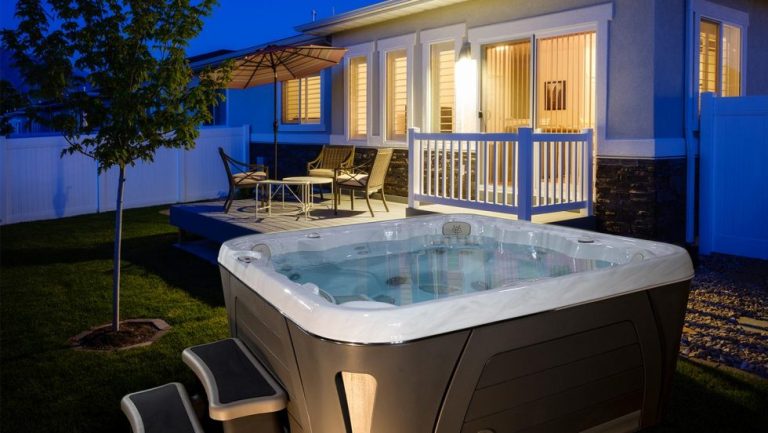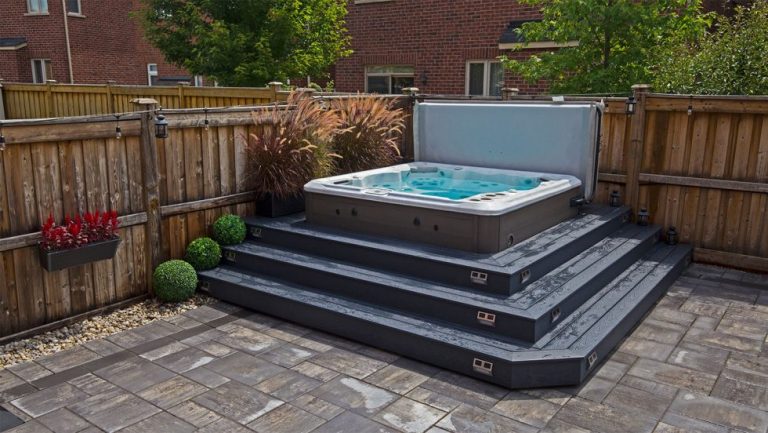While it’s easy to get excited about the possibility of a new hot tub and make a purchase quickly, educating yourself before you make a choice is key to getting the best value and features for your lifestyle. Too many consumers make the same mistakes time after time, leaving them dissatisfied with their choice.
To help you avoid these mistakes and make sure you choose the perfect hot tub for you, we’ve explained each common mistake below. In addition, we have included tips to help you avoid making the wrong decision so you get the best hot tub for your money.
MISTAKE #1: FOCUSING ON PRICE VERSUS LONG-TERM EFFICIENCY AND SATISFACTION.
Although most consumers believe a good hot tub will cost between $3000 and $4000, the reality is that a high-quality model typically costs between $7000 and $12,000. While you may save in the short-term on a cheaper hot tub, the problem is that if you don’t invest in a higher-quality tub, electrical bills, chemicals, parts, and other problems will cause you to spend well over $8000. Even worse, with cheaper models the maintenance costs are typically ongoing.
To avoid this issue, when you’re in the market for a hot tub, focus on the total lifetime cost rather than the upfront cost. Try to uncover how much it will cost you to run the hot tub per day (costs can range from .50 to $2). Also pay attention to insulation, the quality of the cover, pump and motor efficiency, and filtration rates to accurately gauge the hot tub’s efficiency and help you save in the long run. Finally, remember that hot tubs that cost more are also typically more efficient and require less maintenance.
MISTAKE #2: NOT INVESTIGATING THE STRUCTURAL INTEGRITY OF THE HOT TUB.
To the average person, the hot tub shell and outer cabinetry may come in different colors and textures, but they all look the same. But assuming that all cabinetry and shells are of the same quality can be a huge mistake, because this couldn’t be further from the truth. Anyone who has experienced a cracked shell or faded cabinetry can tell you that it’s crucial to fully investigate the hot tub’s quality.
To choose the best shell, make sure it is durable and comes with an extended or lifetime warranty. 90% of hot tub shells are made of acrylic or thermal plastic, which are very durable. Under an acrylic shell, make sure the bond between the acrylic and fibreglass is strong enough to hold weight and prevent cracking, peeling, or blistering. To determine this, make sure the hot tub uses vinyl ester resin skin coat as a water proofing coat and Poly Ester Resin as a strengthening coat. If you cannot determine the bond, make sure to ask the salesperson.
Cabinetry is another important consideration. Although earlier generations of hot tubs were made of durable redwood or cedar, most of today’s cabinetry is synthetic. The best hot tubs are made by manufacturers who have specially engineered their hot tubs for superior durability and protection from extreme heat, cold, and UV rays. The best modern hot tubs also require little to no maintenance and provide durable cabinetry with structural support. When choosing a hot tub, look for a model that has a built in structural cradle that can support the tub with or without the cabinet. This will ensure that the weight stays balanced.
MISTAKE #3: UNDERESTIMATING THE AMOUNT OF REQUIRED MAINTENANCE.
At the top of the list of hot tub owners’ complaints is feeling overwhelmed by maintenance. To keep your hot tub looking great and functioning properly, you must maintain it. The good news is that by being a smart shopper, you can find a hot tub that requires less maintenance and can save you money.
When considering chemicals, a little knowledge can go a long way. Although many hot tub retailers will insist that the correct chemical levels must be maintained at all times and must be checked each time you use your hot tub, this is not actually true. For the first month or “Honeymoon” period this is recommended but after that first month, testing once per week is sufficient. Remember that more chemicals are not necessarily better.
Filters are another maintenance area where knowledge is crucial. A quality hot tub system will have an exceptional system that filters both the top of the water and the bottom of the hot tub for body oils, lotions, hair spray, and more. Dirt can only do two things: float on the surface or drop to the bottom, so choose a hot tub with pressurized filtration rather than a suction side filter. Pressurized filters clean 100% of the water in only 15 minutes while inefficient suction side filters can take up to 4 hours to filter the same amount of water.
Most hot tub manufacturers recommend draining and cleaning your hot tub no more than 3 to 4 times per year, depending on how well you maintain it. An average hot tub will take between 4 and 10 hours to drain through a gravity drain, with the need to manually bail out any water that remains. In your search, look for models that simplify this process.
Finally, remember that the exterior of your hot tub must be well treated to repel water and withstand the elements. This does not, however, need to be a major task. Simply spray the cover with water repellent every 2 to 3 months for low-cost protection.
MISTAKE #4: NOT SELECTING THE RIGHT HYDRO-THERAPEUTIC JET STRUCTURE.
Hot tubs offer extensive hydro-therapeutic benefits for back pain, neck pain, sports recovery, leg pain, stress relief, insomnia, headache relief, and overall body awakening. These benefits are a top reason why people invest in hot tubs.
Not all hot tubs provide the same level of benefits, however. The jet shape, type, and position are crucial to an exceptional hydrotherapy experience, so it’s important that you choose wisely. For example, if you have upper back pain and your hot tub’s jet structure is ineffective for that problem, you’ve just wasted money. The jet structure should also be adaptable so that you can adjust it to the type of massage you need rather than receiving the same massage each time.
To maximize the therapeutic benefits, choose a hot tub with jets that can be individually adjusted for preferred water pressure. Although many hot tubs allow you to adjust the water pressure among groups of jets, being able to adjust individual flow for each jet will offer you a fully customized experience that meets your therapeutic needs.
MISTAKE #5: NOT TAKING INTO CONSIDERATION THE AREA WHERE YOUR HOT TUB WILL BE PLACED.
A common error shoppers make is purchasing a hot tub without deciding where they will place it. If your hot tub will be located outside, avoid placing it in a low area that will be easily flooded during heavy storms. Do not put it in or around sand, as sand can severely damage a hot tub.
When considering placement, choose a firm, level surface like a flat concrete slab. Because an average hot tub weighs around 5000 pounds when full, enlist the help of a structural engineer if you plan to install your hot tub on a patio or deck. A professional will be able to determine whether the deck will be able to support the weight of the hot tub.
MISTAKE #6: OVERLOOKING THE IMPORTANCE OF THE WARRANTY.
A strong warranty for all parts of your hot tub should be a crucial part of your purchasing decision. In general, make sure to choose a full warranty and avoid warranties that are ‘pro-rated’. Although a pro-rated warranty requires the retailer to pay part of the repair costs, it also requires you to pay a percentage of these costs. In addition, make sure your warranty includes the following:
- Shell Structure: Warranty for water loss due to defects in the hot tub shell. The average warranty period for shell structure is 1 to 10 years.
- Shell Surface: Warranty for the interior surface of the hot tub and any blistering, peeling, cracking, and delamination. The average warranty period for shell surface is 1 to 5 years.
- Leaks: Warranty for water loss due to defects in the fittings and plumbing lines. The average leak warranty period is 1 to 5 years.
- Equipment: Warranty for all hot tub electronic controls and pumps, including mechanical or electrical breakdowns, parts and labor. The average equipment leak warranty period is 1 to 3 years.
MISTAKE #7: NOT CHOOSING A REPUTABLE DEALER AND MANUFACTURER.
One of the worst mistakes you can make as a shopper is to purchase a hot tub from a dealer or manufacturer that isn’t reputable. These dealers are often found at traveling expos where you’ll often find what appears to be a great deal on a hot tub, when in reality the manufacturer is simply trying to sell excess inventory by using misleading sales strategies. For example, expo advertisements may state that there will be 8 different brands on display, when in reality all have the same supplier.
When you take the time to choose the right dealer, you’ll enjoy a relationship with an honest company that sells a high-quality hot tub, has experience in the industry, and offers warranties that will protect your investment. To find a great dealer, ask their permission to contact their customers so you can learn more about what it’s like to work with them. Additionally, when you visit additional dealers, ask them about the last dealer you visited and about the hot tubs their competitors carry. This can alert you to issues with specific dealers, although you’ll always want to verify that the information is true.




